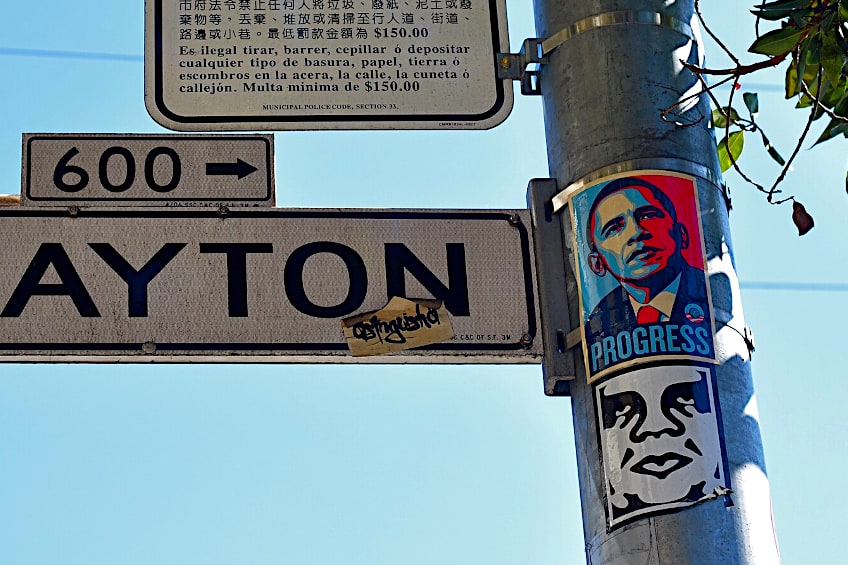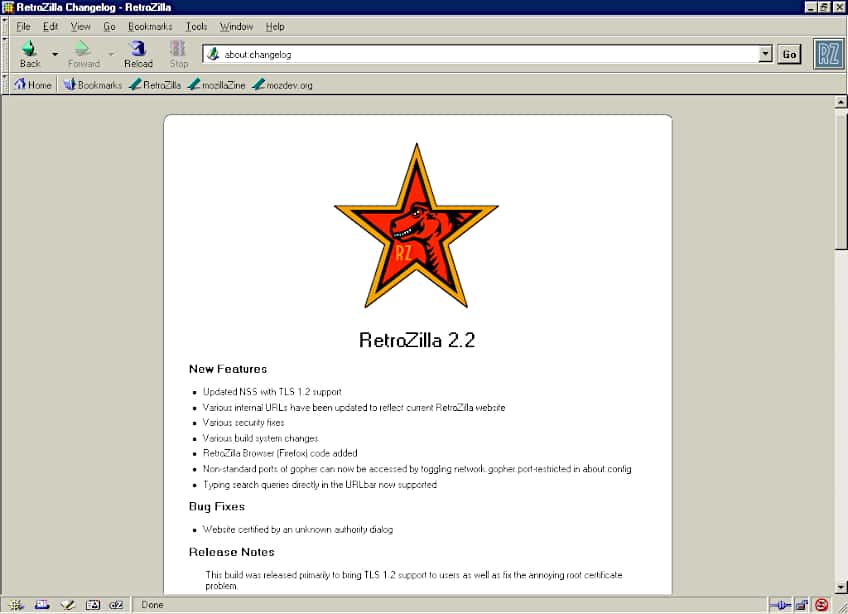Shepard Fairey – The Phenomenology of OBEY
From provocative text in sticker art to iconic political posters of the 21st century, Shepard Fairey’s artworks have left a profound mark on the American street art scene. As an activist, business owner, and street artist, Shepard Fairey has created some of the most publicized and influential images of iconic political figures, including Barack Obama, which became incredibly influential during the former president’s 2008 campaign. In this article, we will introduce you to the life and art of one of the 21st century’s greatest political street artists through a Shepard Fairy biography, including some of his career-defining artworks. Read on for more about this internationally acclaimed artist!
The Life and Art of Street Art Activist Shepard Fairey
| Artist Name | Frank Shepard Fairey |
| Date of Birth | 15 February 1970 |
| Nationality | American |
| Associated Movements, Themes, and Styles | Street art, graphic art, Contemporary art, graphic art, sticker art, public art, Pop art, post-graffiti art, and political activism |
| Mediums | Illustration, stenciling, silkscreen, printmaking, and painting |
| Famous Artworks |
|
One may associate the legendary graphic artist Shepard Fairey with his contribution to the 2008 Obama campaign, which circulated a poster called Hope donning a stylized portrait of Barack Obama with the caption “Hope” below his face. This poster quickly became one of the most circulated and influential images behind Obama’s presidential campaign. Fairey is also known for promoting his own clothing company called OBEY Clothing as well as the artist behind the sticker design for the 1989 sticker campaign, Andre the Giant Has a Posse.
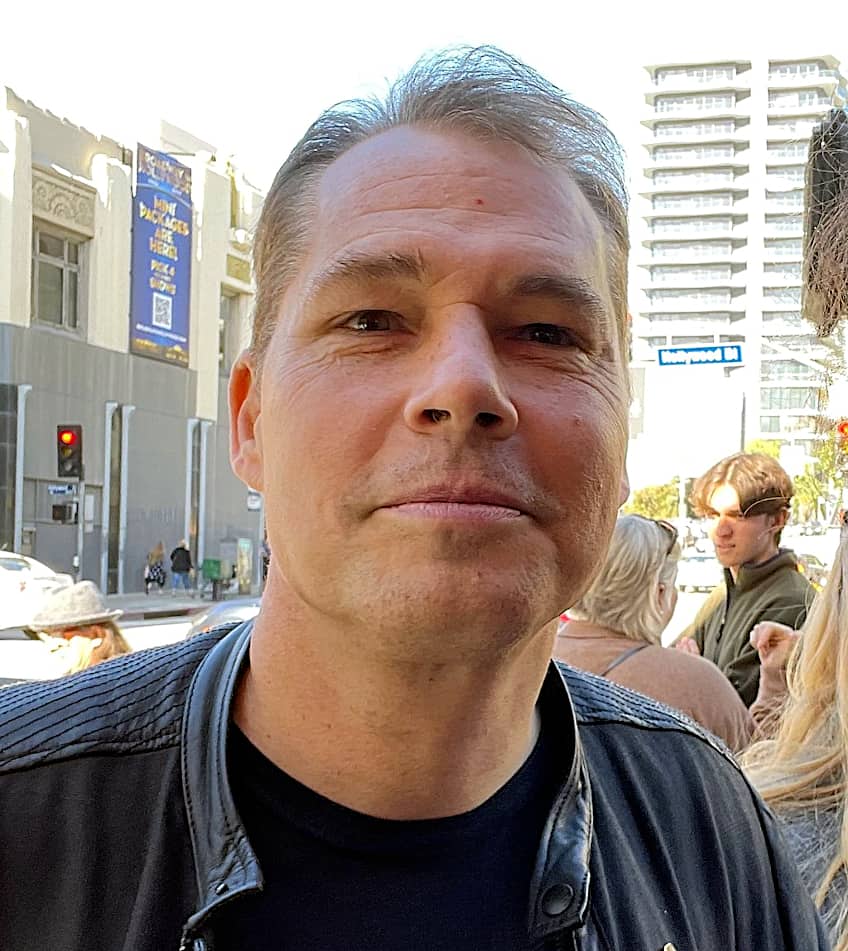
Below, we will explore an intriguing Shepard Fairey biography, as well as details on the creation of some of his most iconic works, and Fairey’s role as an activist.
Street Art As Activism: A Shepard Fairey Biography
Shepard Fairey is a name synonymous with public art, American street art, and graphic design, whose extensive career in social, political, and environmental campaigns have resulted in many iconic works across the urban landscapes of the United States, Europe, and Africa.
Fairey’s works are often politically charged and include images that appeal to those who appreciate the advocacy of important issues while leveraging art as a tool for such causes.
Driven by the concept of phenomenology, also understood as the structures of consciousness and experience, Fairey continued to evolve his art from sticker designs to a clothing label, which elevated the experience of his art.
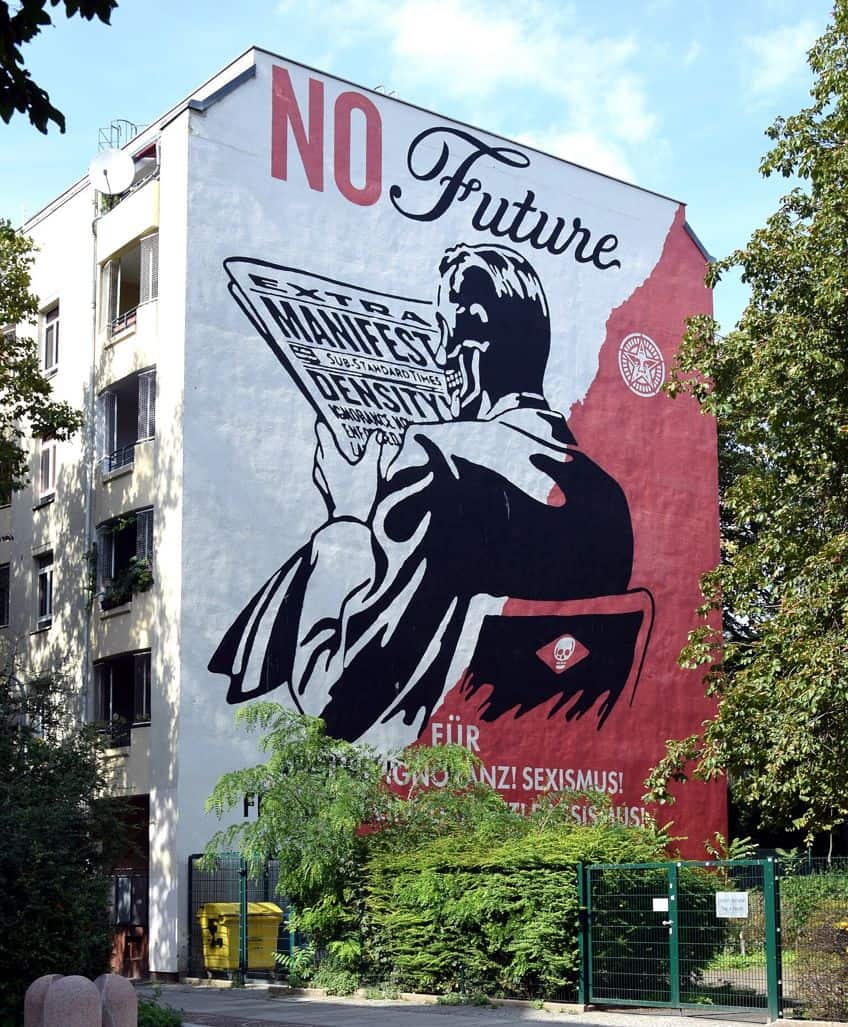
Shepard Fairey was born in 1970 in South Carolina to a father who was a doctor and a mother who was a realtor. During his high school years, Fairey attended the Idyllwild Arts Academy in California and soon threw himself into the art scene of the 1980s. By 1984, Fairey was already using his drawings to create unique skateboards and t-shirts, and in 1988, he chose to attend the Rhode Island School of Design, where he obtained a Bachelor of Fine Arts, specializing in illustration.
Early Career: The Obey Sticker Campaign
Shepard Fairey was young and driven toward his goals. While studying at the Rhode Island School of Design in 1989, Fairey created a sticker campaign called André the Giant Has a Posse, which soon grew into a new campaign called the Obey Giant campaign. Fairey’s growth and recognition as a young designer and artist grew rapidly and soon his campaign imagery received international attention from other street artists and skate community members who admired Fairey’s design. Fairey’s sticker was created to incite reactions from the public instead of conveying a particular meaning and was aimed at prompting people to question the environment they occupy. While some critics view the piece as pure vandalism, many artists and individuals appreciate the philosophy upon which the Obey Giant campaign was founded.
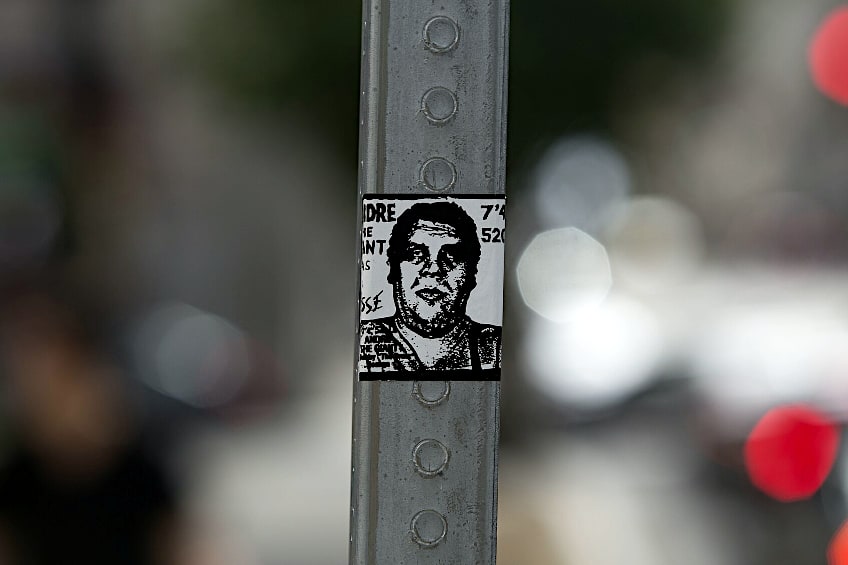
According to Fairey’s manifesto on the campaign, the project is an experiment that explores the philosophy of phenomenology as pioneered by German philosopher Martin Heidegger. The philosophy is dependent on “the process of letting things manifest themselves” and attempts to alter individuals’ vision and perception of viewing things that are right in front of their eyes yet are obscured. These are things that are often muted out through abstract observations and are taken for granted.
Fairey’s Obey sticker is aimed at sparking curiosity in people to inspect their relationship with their surroundings and question the role of the sticker and its meaning.
The placement of the sticker as a form of public art in public spaces is a way of observing the possible frustration of the human mind, which in the 21st century, finds people so used to seeing images of propaganda with direct messaging and themes and when met with a text or image that has no clear meaning, one is often confused and frustrated with its lack of purpose.
In addition to German philosophy, Fairey is also known for his famous slogan “The Medium is the Message”, which was adopted by Canadian philosopher, Marshall McLuhan.
After he graduated from the Rhode Island School of Design, Fairey opened up his store in Providence called Alternate Graphics, which offered printing services for sticker silkscreens and T-shirts. His small business allowed him to continue pursuing his artistic endeavors and in 1994, he collaborated with film graduate Helen Stickler, who also graduated from the Rhode Island School of Design, and helped create a short documentary film for Fairey called Andre the Giant has a Posse. The film aired at the New York Underground Film Festival the following year and also featured at the Sundance Film Festival in 1997. The film quickly circulated across the globe to air at around 70 different museums and festivals.
Guerilla Marketing and Design Agency
Shepard Fairey moved to San Diego where he reportedly co-founded a new company called BLK/MRKT Inc. specializing in guerilla marketing. Guerilla marketing is an alternative method of marketing that borrows the element of surprise from guerilla warfare to communicate with the public. For a street artist, one can imagine that this might have been ideal for Fairey. During this time, Fairey appropriated styles from the Russian Constructivist and Social Realist art movements, which formed the stylistic signature of Soviet propaganda.
His focus on Communist imagery and art styles is speculated to have played a significant role in Fairey’s heightened fame in the wider arts community and establishment as an icon.
Fairey ran BLK/MRKT Inc. alongside Phillip DeWolff and Dave Kinsey until 2003. The small but popular design studio executed projects for companies such as Pepsi, Netscape, and Hasbro with Fairey’s most famous design emerging as the former logo and mascot of mozilla.org. Fairey left BLK/MRKT Inc. to pursue his own design agency called Studio Number One, which he founded with his wife Amanda Fairey in 2003.
Original Mozilla dragon logo designed by Shepard Fairey (1998); RetroZilla: rn10950, Nathan Lineback, Roy Tam, and contributors;The original Mozilla dragon was designed in 1998 by Shepard Fairey;mozilla.org, mozilla.com, and contributors (for the original Mozilla sources);the SeaMonkey Project and contributors (for the original SeaMonkey sources).NoScript (icon): Giorgio Maone and contributors. (MPL 1.1, GPL, LGPL or GPL), via Wikimedia Commons
The Fairey’s agency was a hit for the music and entertainment industry and Studio Number One went on to design covers for artists such as The Smashing Pumpkins, Anthrax, The Black Eyed Peas, and Led Zeppelin. In 2003, Fairey also saw immense success as he exhibited work alongside other talented street artists such as Banksy and Dmote, which saw more than 1,500 people in attendance. The exhibition, called Semi-Permanent, was held at a warehouse in Alexandria, Sydney. In 2004, Fairey teamed up with Roger Gastman and founded the arts and culture magazine, Swindle Magazine. Fairey also spent some time as the founding Creative Director for the Ad agency called Project 2050, which was based in New York City.
Significant Collaborations and Exhibitions
In 2004, Fairey collaborated on an anti-war and anti-Bush project alongside artists Mear One and Robbie Conal under the collective name Art Gen. The collaboration resulted in a campaign called Be the Revolution, which launched with a series of evening performances by various DJs and musicians. The following year, Fairey also collaborated with DJ Z-Trip on a limited edition 12-inch featuring American rapper Chuck-D. He also joined DJ Shadow on a box set and Mix CD, which was accompanied by a series of stickers, T-shirts, and prints.
Fairey also contributed to the artwork designs for covers and posters on the Johnny Cash biopic Walk the Line in 2005 as well as eight vinyl etchings in the following year for a limited edition 12” series by Mission of Burma and posters for the goth band Bauhaus.
In 2008, he collaborated with DJ Z-Trip again on a series of shows supporting the Obama campaign and participated in the Party For Change project.
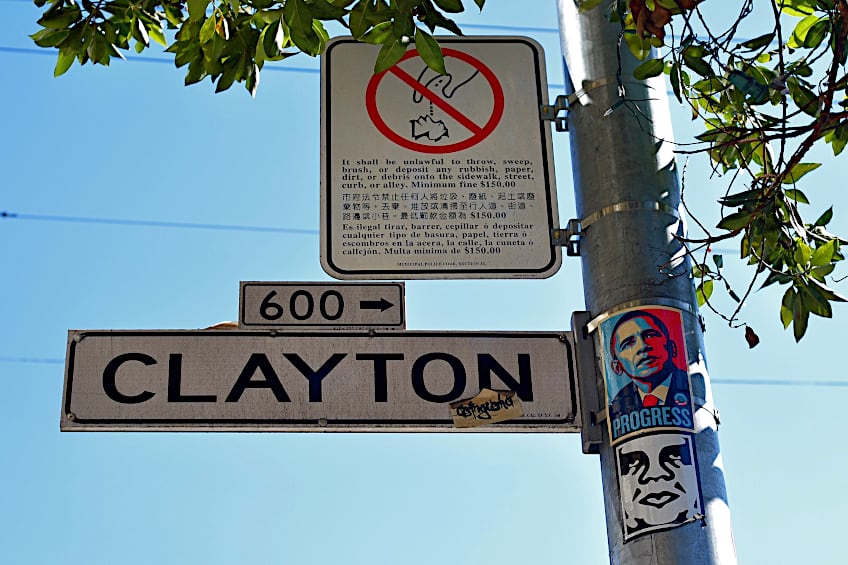
Fairey set off for Paris in 2005 to exhibit at the Magda Danysz Gallery and later became a resident at the Honolulu Museum of Art Spalding House. In 2008, Fairey held a solo exhibition at the White Walls & Shooting Gallery in San Francisco called Duality of Humanity, and on his third solo exhibition, he included around 150 artworks, which became the largest collection of canvas works in one show executed by the artist.
In 2007, Fairey opened a one-man show called E Pluribus Venom, which was held at the Jonathan LeVine Gallery and was a successful show that featured on the front of the arts section of the New York Times.
Fairey then exhibited at the Institute of Contemporary Art in 2009 under the same title as the release of his book Supply & Demand. His exhibit at the art museums featured over 250 artworks ranging from stickers to Rubylith illustrations, wood works, paintings, and screen prints. He also paired his exhibition with public street works across Boston to further cement the philosophy of phenomenology.
Famous Shepard Fairey Artworks
Fairey’s exhibition Damaged (2017) was held in Los Angeles and stirred up controversy surrounding concerns about cultural insensitivity, however, his works reiterated the state of America and his artistic stance on issues of race, gender equality, and environmental issues. With street art and activism in the public eye, also come possible arrests and criticism.
Shepard Fairey was arrested many times for accusations of vandalism, damage to property, and outstanding warrants related to graffiti.
Fairey had also been accused of appropriation and has been in the position of having his work appropriated. His art has also received criticism for shifting the views of graffiti as a tool for self-promoting and advertising, which does not affect Fairey in any way since the artist expressed that his intentions behind his public and political works were not connected to demeaning personal struggles or exploiting it.
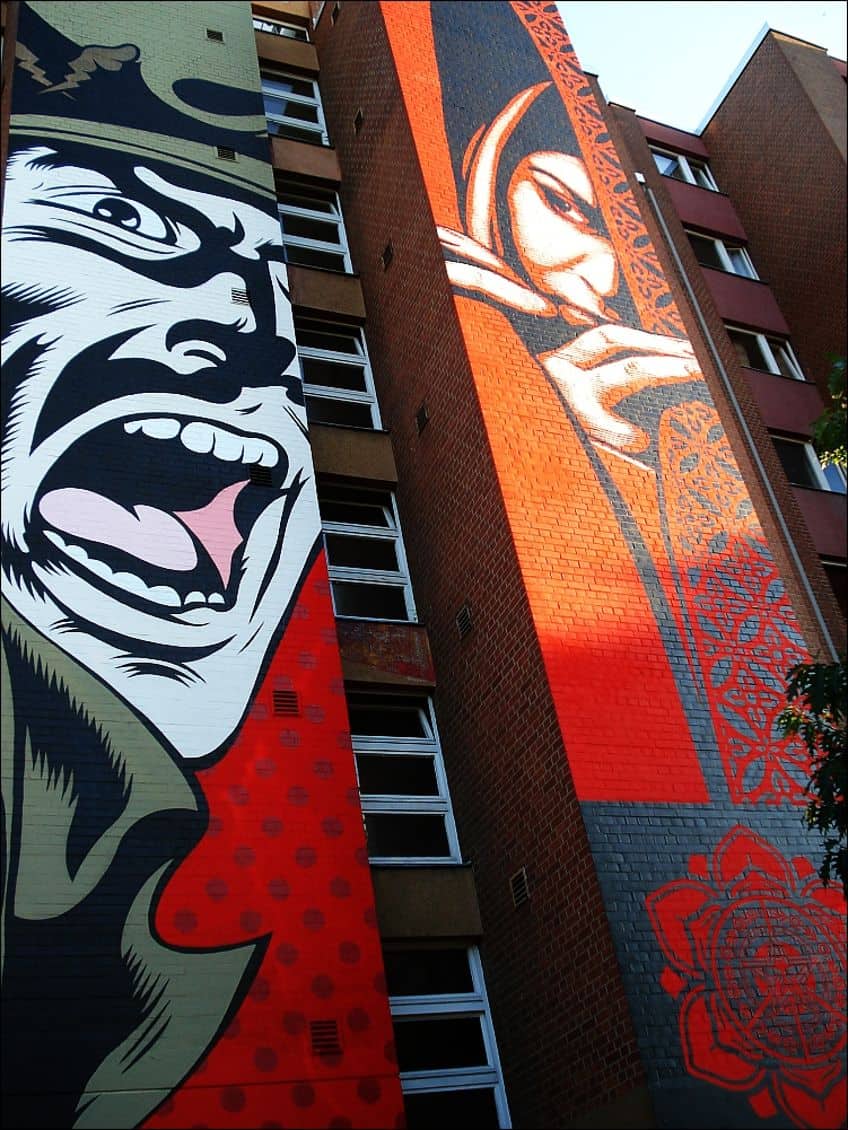
While some of Fairey’s graphic artworks are challenged by critics, others admire his ability to balance the mood and emotional impact of politically charged works that are based on forms of ethics and concepts. Fairey’s status as a political activist and artist who circulates gallery and public art spaces is also critiqued in terms of the commodification of socially and politically driven artworks. Below, we will introduce you to the most famous Shepard Fairey artworks that stood out in his career and challenged existing notions of appropriation, politics, and the role of the artist in commercial and public spaces in art.
Barack Obama “Hope” Poster (2008)
| Date | 2008 |
| Medium | Color lithograph on white wove paper |
| Dimensions (cm) | 86 x 61 |
| Where It Is Housed | Art Institute Chicago, Illinois and the National Portrait Gallery, Washington D. C., United States |
While the initial design of the Hope poster for the Obama campaign was deemed illegal and originally captioned with the text “progress”, the Hope poster was adapted and grew in such popularity that it became the marketed face of the campaign. Throughout the campaign, Fairey distributed around 500,000 posters, from which the sales were sent back into his fine art business to produce more posters for the campaign. In the same year, Fairey also received a letter of thanks from the president himself for his contribution to supporting the campaign and commended Fairey on his contribution as an artist who can produce impactful imagery.
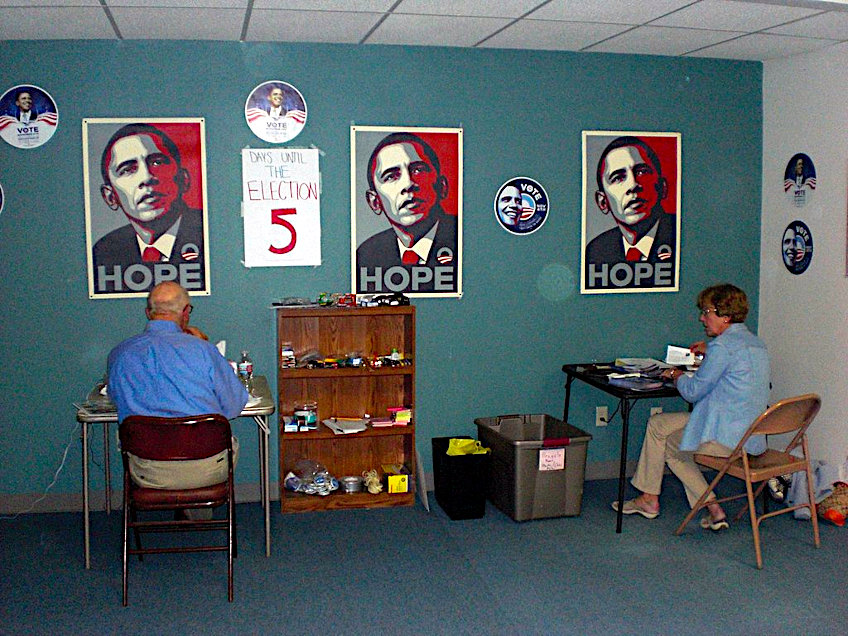
The iconic image of Barack Obama was also amended for the 2008 cover of Time’s Person of the Year edition. The portrait was also officially acquired by the National Portrait Gallery in Washington D. C. and exhibited in 2009.
Fairey had also faced legal issues concerning the use of an image by Associated Press that was shot by Mannie Garcia which ended in a settlement and Fairey admitting to his charges of fabricating and destroying evidence to conceal the fact that he based his poster on the image that Garcia shot.
The poster was based on a modern graphic design-inspired reinterpretation of the Soviet Socialist Realism style, which was adapted as a form of street art and poster accompanied by Fairey’s signature stencil method and high contrast color palette.
Make Art Not War (2014)
| Date | 2014 |
| Medium | Spray paint; offset lithographs |
| Dimensions (cm) | Unavailable; Prints: 91 x 61 |
| Where It Is Housed | Urban Nation, Berlin, Germany |
Originally a mural for Berlin’s Urban Nation, Fairey created this Art Nouveau-inspired motto in support of peace and anti-war movements. Fairey executed the piece in the traditional street art medium, spray paint, and included designs that can be seen in his other works. Symbols such as roses were repeated and stylized in a cartoon-like manner in red and black paint.
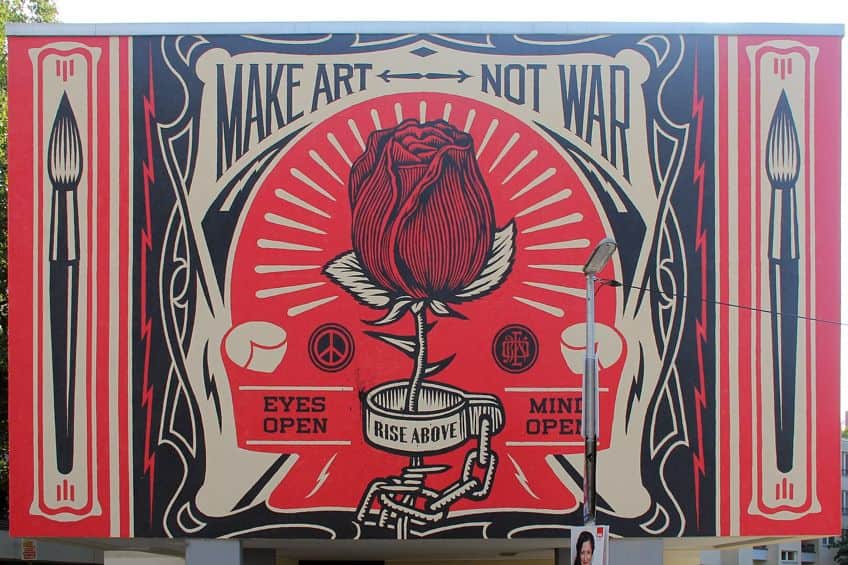
Fairey also created a series of posters with the motto reading “Make Art Not War” as a spin-off of the 1960’s version “Make love, not war” and draws reference to the psychedelic motifs and designs of Art Nouveau art.
In place of love, Fairey leverages the power of creativity as the weapon of combat against war and the darkest aspects of humanity.
The artwork is political and optimistic as it claims that with art, not all “hope” is lost. In his design, Fairey also includes paintbrushes as the spears on a coat of arms emblem, which makes the work appear commanding and direct.
Nelson Mandela Mural (2014)
| Date | 2014 |
| Medium | Spray-paint and acrylic |
| Dimensions (cm) | 288 x 700 |
| Where It Is Housed | Juta Street, Braamfontein, Johannesburg, South Africa |
This large-scale mural faces the Nelson Mandela Bridge in the heart of Johannesburg, South Africa, and was created by Fairey as a tribute to the Purple Rain protest, which occurred in 1989, in Cape Town. At the protest, police hosed down many Mass Democratic Movement supporters with a police hose in water that was dyed purple.
The public artwork was created by Fairey to commemorate the protest’s 25th anniversary and is considered a sequel artwork to Fairey’s Hope poster since it mimics the high contrast style of the Barack Obama portrait. The mural was curated and produced by creative director Jesse Stagg and supported by the U.S. State Department, the Nelson Mandela Foundation, the South African Consulate of Los Angeles, and Play Braamfontein.
Art as a Tool for Humanitarian Contribution
Shepard Fairey has also extended his efforts and artworks in support of numerous projects and initiatives aimed at humanitarian causes. Fairey often gives back to various charities and organizations in support of the political and social causes that he advocates for. Among the organizations that Fairey supports include the ACLU, the Art of Elysium, Feeding America, and the Chiapas Relief Fund.
The influential graphic artist also contributes to medical research organizations and supports those that are dedicated to developing cures for human diseases.
In 2012, he created a special print for the Juvenile Diabetes Research Foundation, which helped establish the organization as the leading research unit for diabetes type-1. Since 2009, Fairey has also consistently contributed to fundraising efforts for the RUSH Philanthropic Arts Foundation as well as advocating for school safety through poster work. Fairey’s personal program operates under the Obey Awareness Program, which he founded in 2007 and used to donate sales from limited edition merchandise to different non-profit organizations. Fairey is also a supporter of environmental activism and supports many organizations, including the Alaskan Wildlife Refuge, Urban Roots, and the Surfrider Foundation.
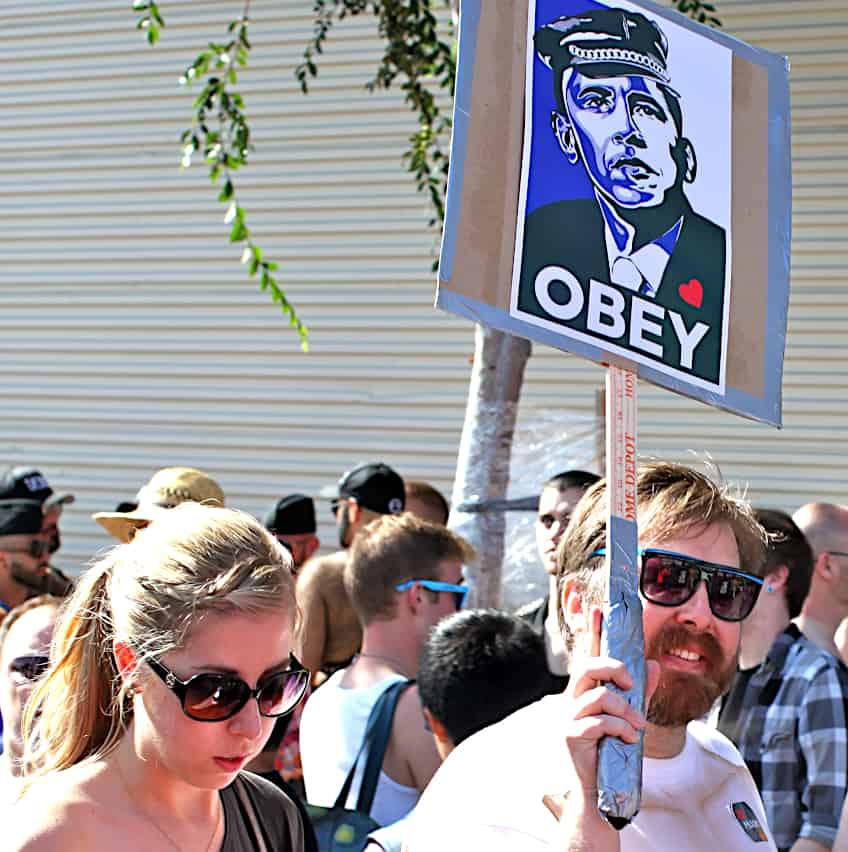
The street artist and activist furthered his devotion to humanitarian support and advocating for arts education by providing art materials to disadvantaged schools under the Reaching to Embrace the Arts organization. He also supports music education in public schools under the non-profit organization Music Is Revolution Foundation. Shepard Fairey is an outstanding example of how an artist who is recognized as an icon may use their resources, influence, and fame to advocate for important humanitarian issues and contribute to society in more ways than profiting off the society in which they thrive.
Shepard Fairey remains one of the most iconic street artists of the Contemporary period, whose works reflect his dedication to serving humanity in ways that many artists overlook. Fairey and his work have received both positive and harsh reviews that spark questions around the role of an artist like Fairey, whose use of street art as a tool for propaganda across political, social, and environmental activism has bolstered causes and campaigns on both a local and global basis.
Frequently Asked Questions
Who Is Shepard Fairey?
Shepard Fairey is a renowned American Contemporary street artist, political activist, and graphic designer, who is most famous for his poster of Barack Obama created during the 2008 U.S. presidential campaign. Shepard Fairey works across a variety of media to produce works centered on social critique, political activism, and popular culture.
What Art Style Does Shepard Fairey Use?
Art styles expressed in the work of Shepard Fairey include elements of post-graffiti art and street art fused with graphic design, Pop art, and war propaganda styles. Fairey works with bold contrasting colors, iconic figures, symbols, and typography to relay messages related to social, environmental, and political issues and causes. His style is described as edgy, impactful, and stylized.
What Is Shepard Fairey’s Most Expensive Artwork?
In 2023, Shepard Fairey’s Hope artwork was sold on auction at Santa Monica Auctions for $950,000, and became the artist’s record price since 2008.
Jordan Anthony is a Cape Town-based film photographer, curator, and arts writer. She holds a Bachelor of Art in Fine Arts from the University of the Witwatersrand, Johannesburg, where she explored themes like healing, identity, dreams, and intuitive creation in her Contemporary art practice. Jordan has collaborated with various local art institutions, including the KZNSA Gallery in Durban, the Turbine Art Fair, and the Wits Art Museum. Her photography focuses on abstract color manipulations, portraiture, candid shots, and urban landscapes. She’s intrigued by philosophy, memory, and esotericism, drawing inspiration from Surrealism, Fluxus, and ancient civilizations, as well as childhood influences and found objects. Jordan is working for artfilemagazine since 2022 and writes blog posts about art history and photography.
Learn more about Jordan Anthony and about us.
Cite this Article
Jordan, Anthony, “Shepard Fairey – The Phenomenology of OBEY.” artfilemagazine – Your Online Art Source. October 12, 2023. URL: https://artfilemagazine.com/shepard-fairey/
Anthony, J. (2023, 12 October). Shepard Fairey – The Phenomenology of OBEY. artfilemagazine – Your Online Art Source. https://artfilemagazine.com/shepard-fairey/
Anthony, Jordan. “Shepard Fairey – The Phenomenology of OBEY.” artfilemagazine – Your Online Art Source, October 12, 2023. https://artfilemagazine.com/shepard-fairey/.


